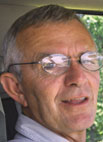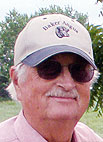
On the north and east slopes of the tenth highest hill in Missouri's Douglas County is a sea of fescue and clover dotted with Angus cattle hugging the shade of the trees.
It’s a favorite spot for Harold Gray of Ozark, Mo., who runs cow-calf pairs on land that’s been in his family for more than 100 years. His stocker cattle operation employs no full-time employees, relying on neighbors and family for trade-out help and advice.
Harold was hooked on the land as a boy learning from his grandfather. Later, he sold a boat for seven bottle-fed calves, and that sealed the deal. For the past 15 years, he’s been a serious student of grass and cows.
“I tell everyone I’m a grass farmer first and a cattle farmer second,” he laughed, adding that the only way to break even in cattle today is to pay close attention to genetics and management.
On the genetics side, he has 11 bulls carefully selected for their EPDs along with using some AI breeding. He backgrounds his calves, keeping records when the calves are graded at butchering. Jewell County Feeders, the small feedlot in Mankato, Kan., that he’s partnered with for 12 years, obtains records from the packer that can be traced to the mother showing whether she is worthy of staying in the herd. He recommends livestock producers thoroughly research feedlots and settle on one that will work with them to meet their needs. For him, a smaller lot works best where the owner can truly get to know his cattle. Visiting the lot makes a difference, too.
“When you first send your cattle to a lot, you’re doing it on faith and trust,” he said. “The first year I went out and looked at the calves when they were at a finish weight of 1,200-1,300 pounds and came back with a completely different perspective. My largest, fattest and sleekest calves turned out in some cases to weigh 200 pounds less than others I sent out that didn’t look as good to start.”
That’s when Harold became a believer in genetics. He began introducing Angus to his Charolais cross cows, keeping their offspring. After this year, Harold will have all Black Angus and Black Baldie cows. He raises his own heifers, keeping about 40 a year.
Because it doesn’t cost any more to feed a low-quality cow than a high-quality one in his operation, Harold believes genetics is helping him break even in bad years and make some money in good ones. Because of the genetics, he has sold on the grid, (selling by hanging weight instead of live weight). His calves grade 65.9 percent processed weight and 79 percent choice, which can mean an additional $5-6 more per hundred at selling time. He calves in March and ships the calves to the feedlot 45-60 days after weaning when they weigh about 700 pounds or directly from the cow at 500-600 pounds.
On the management side, Harold’s operation features an abundance of pasture year round. He utilizes 60 pastures, each 20-40 acres, which is a lot of grass, but it allows Harold to stockpile grass for the winter. Though first- and second-year cows get some supplemental feed, mature cows remain fat on grass, minerals and salt even in winter. He puts out hay only when there’s ice or significant snow on the ground. “My cows just do better with stockpiled grass than they do on hay and supplemental feed,” he said.
He’s replaced expensive fertilizer with turkey litter, laid down in late spring. He uses permanent fencing, having found that frolicking calves and deer knock down electric fences in his area.
Utilizing rotational grazing, and moving the herd every three days, Harold’s cows move to fresh pasture because in that time period, 70 percent of the best nutrients have been consumed. “Every time a cow opens its mouth, I want it to have something good to eat,” he said.
Harold is working to make a good feedlot relationship, quality genetics and sound management techniques work for him.







